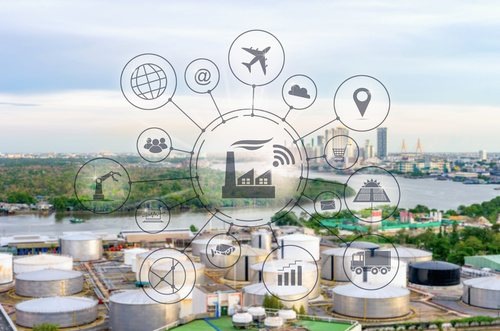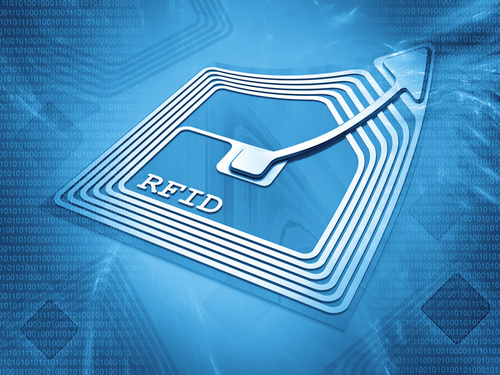As an efficient and effective method of tracking items and transferring data, it is not surprising that RFID (radio frequency identification) has gained prominence across several industries, though more notably within warehousing.
As demand for warehousing has increased, many businesses, globally, but specifically in the US and Canada, require services ranging from brief import housing to long-term storage of their products.
Over time and through technological advancements, businesses have required additional tools to deal with increased customer demands. Previously, barcodes were used within warehouses. These helped to tag, dock, and store stock and barcode readers were used to identify stock that came in and went out in a structured and organized manner. This worked well when single sources came in as barcode items were individually scanned one at a time. However, this was still a labor-intensive and time consuming task and required a significant amount of paperwork, tracking, and could easily lead to mistakes.
As warehouses grew in size, reaching up to many thousands of square feet of stock and storage space, the use of barcoding became less feasible. Coupled with this was also the increased competition within the sector as well as the rise of more discerning customers who demanded immediate benefits with less thought about loyalty. Businesses had to adopt to address speed, delivery/time, and cost, especially within their just-in-time inventory. Additionally, the cost of labor was also rising and was error-prone. Thus, a new and improved technology was the need of the hour.
Given this, RFID brought in a paradigm to the sector. One of its main benefits was being able to store up to “100 times the data of barcodes” and can keep track of all inventory data such as “lot and serial number, size, manufacturer, vendor, expiration date, user, location on production line, etc.”

This is very beneficial when dealing with multiple functions such as order-picking and receiving, pick-and-pack sorting, distribution, trans-loading, promotional packing, and cross-docking.
So what is RFID? Many observers have named it the smart barcode because it is layered on top of a traditional barcode and can complete more complex functions. In essence, RFID (a form of Auto ID technology) is “a system that transmits identity in the form of a unique serial number of a product wirelessly.” Just like many other smart products such as TVs, other electronic appliances or household products, RFID tags consist of “a microchip attached to a radio antenna mounted on a substrate.” The use of this technology “connects products to the Internet for tracking purposes so that information can be shared [with businesses] across the supply chain.”
Of course, such technology can enable many varied uses and also helps to reduce time, improve real-time data accuracy, and lessen the burden on human labor involved.
Within the warehousing industry there are two types of RFID systems that are commonly used – active and passive. Passive RFID tags “do not have transmitters and simply reflect back radio waves that originate at the reader antenna,” whereas Active RFID transponders (a microchip with an antenna) “are placed on products [through which] information is accessed using a reader to pass the information to a computer.”
In terms of direct use, active RFID tags are typically used for “large assets, including cargo containers, rail cars and containers that are transported over long distances.” Passive RFID tags, are less expensive and require less maintenance though lack power sources and transmitters, ensuring their use is more limited.
The benefits of RFID within warehouses are significant. With their use, stocks can now be tagged through RFID portal readers all at once rather than individually. This is a huge bonus as it can greatly reduce time and effort and improve efficiency and accuracy, owning to the exclusion of manual processes. Further, stock can now be tracked and monitored not only within the warehouse but anywhere across the supply chain, in any location. Further, along with web tools and information about stocks, inventory can be made available in real-time and 24×7.
Another significant advantage is that RFID can be integrated with any warehouse management system that has already been deployed or is currently in use. This means there is less time and effort spent in updating or upgrading to a newer technology and limited lag-time in terms of business processes.
As mentioned earlier, RFID use also provides a much higher level of accuracy as well as an immediacy of information of inventory levels. This means that decision-making concerning replenishment of stocks can be taken with less planning and ‘on the fly’. Also, other decisions can be taken to improve the storage capacity utilization of a warehouse so as to ensure better efficiency and to improve profitability.
Due to the tracking and ‘smart’ advantage, RFIDs can help customers track and follow their goods’ journeys in real-time. Such web-based RFID systems can provide this information and help improve customer satisfaction levels. This is especially critical when precious, high-value goods are stored and being transported and can greatly help to reduce and alleviate the associated risks. Given that the monitoring process is so clear the possibility of theft can be diminished and a safer passageway of transportation could be cleared.
Finally, for both labor and cost there are clear gains given the fact that inventories can be leaner, thus, improving savings. The introduction of RFID tags can also help reduce labor costs, given that the manual work of barcode entry has been removed and humans can focus more on specialized tasks within the warehouse rather than solely on the scanning of each and every item.
As demonstrated, it is evident that RFID tags have revolutionized the warehousing sector and have pushed the associated technology further into the mainstream. Given the impetus they have provided many businesses are now looking at newer ways of using employees for more specialized tasks within warehouses, which cannot be replicated by technology. Thus, the introduction of technology within the warehousing sector is also playing a role in creating a human revolution within the workplace.

